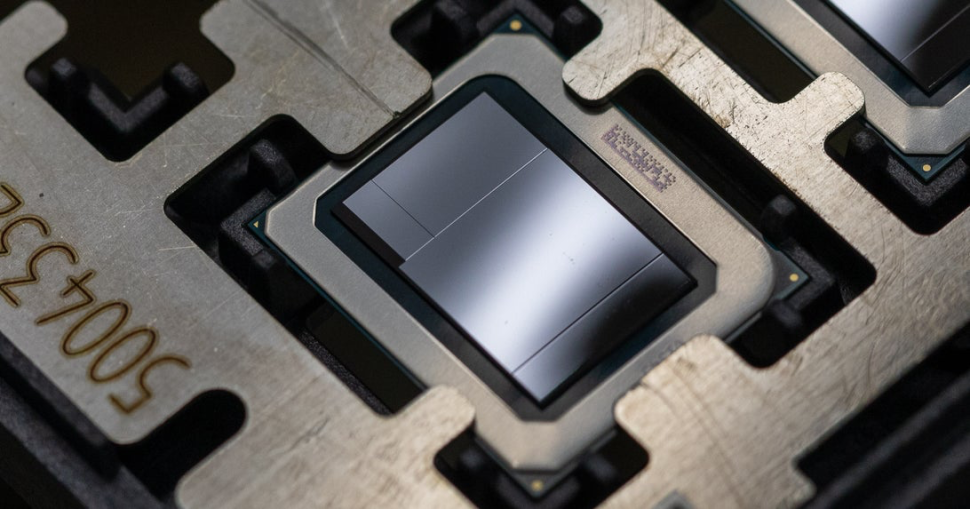
45% IPC boost alone, clocks and cores could add even more.
Could Intel’s upcoming Arrow Lake CPU deliver a massive 45% IPC uplift over the 12th Gen Alder Lake family? That would be a huge increase in per-core, and per-clock performance, and it’s exactly what YouTube channel RedGamingTech is claiming for Intel’s upcoming desktop architecture.
To be clear, Arrow Lake is 100% a thing. It’s been listed on Intel’s public roadmaps, mentioned in earnings calls, the lot. As of right now, we know it’s definitely coming some time next year. Intel has also confirmed it will be one of a new generation of so-called “disaggregated” CPUs, which is another way of saying it will be built up from a number of tiles, or chiplets, like AMD’s desktop CPUs.
What we haven’t heard from Intel, is any indication of performance expectations. Enter RedGamingTech. They claim Arrow Lake will deliver a massive 45% IPC uplift over Alder Lake and thus a similar improvement over the latest 13th Gen Raptor Lake chips, which are architecturally largely the same as Alder Lake.
IPC refers to instructions per clock, and what we are really talking about here is the performance on offer for a single software thread at a given clockspeed from one of Arrow Lake’s performance cores. In other words, that doesn’t mean Arrow Lake will deliver 45% more performance overall.
It could be more, it might even be less than that even if the 45% IPC uplift is accurate. Arrow Lake is said to sport Lion Cove Performance cores and Skymont Efficiency cores. No IPC improvement figures have been attached to those new Efficiency cores, and they will of course play a major role in determining overall performance for the new processor.
Clockspeeds are obviously another major factor, as are core counts. There’s no firm information on either from Intel, though RedGamingTech claims that Arrow Lake was originally slated to offer eight P-core and 32 E-cores, but has since been downgraded to the same eight P-core and 16 E-count as Raptor Lake.
(Image credit: Future)
Best CPU for gaming: The top chips from Intel and AMD
Best gaming motherboard: The right boards
Best graphics card: Your perfect pixel-pusher awaits
Best SSD for gaming: Get into the game ahead of the rest
Even if that is true, assuming Arrow Lake can at least match Raptor Lake for clocks, it will be an awfully quick CPU. If it does bring more E-cores than Raptor, it will seriously fly for multi-threaded tasks.
At this point you may be wondering where Meteor Lake fits into all this, given it’s also on Intel’s official roadmaps and is due to go into production later this year—in other words, before Arrow Lake. Well, as we’ve said on numerous occasions, Meteor Lake always looked like a mobile-only architecture, like Intel’s Ice Lake and Tiger Lake chips.
The rumour that Meteor Lake will be limited to six Performance cores does not mean Intel will be regressing from eight Performance cores on the desktop, or even in laptops. Instead, Meteor Lake chips will be aimed at thin and light laptops, with Raptor Lake and an upcoming Raptor Lake refresh doing the desktop heavy lifting and also featuring in high performance laptops.
Incidentally, it’s not yet clear where Arrow Lake will fit into Intel’s generational nomenclature. Current Raptor Lake chips are 13th Gen. So, you might assume Arrow Lake will be 14th Gen. But then a Raptor Lake refresh is expected later this year that might get the 14th Gen tag.
And what about Meteor Lake? Our guess is that both Raptor Lake refresh and Meteor Lake will be dubbed 14th Gen and Arrow Lake will get the 15th Gen tag. But then Intel’s “Gen” tags have never really meant much and have confused and obfuscated as much as helped with useful product identification.
Anyway, there you have it. Intel’s Arrow Lake chips might just be a major step forward over what are already the best desktop PC processors currently available. If this latest info is accurate, AMD’s next-gen Zen 5 based Ryzen CPUs are going to need to be pretty special just to keep up, let alone beat Arrow Lake.
And they just might be that special given Zen 5 is expected to be AMD’s first hybrid architecture with high performance and high efficiency cores. But that’s a story for another day.



